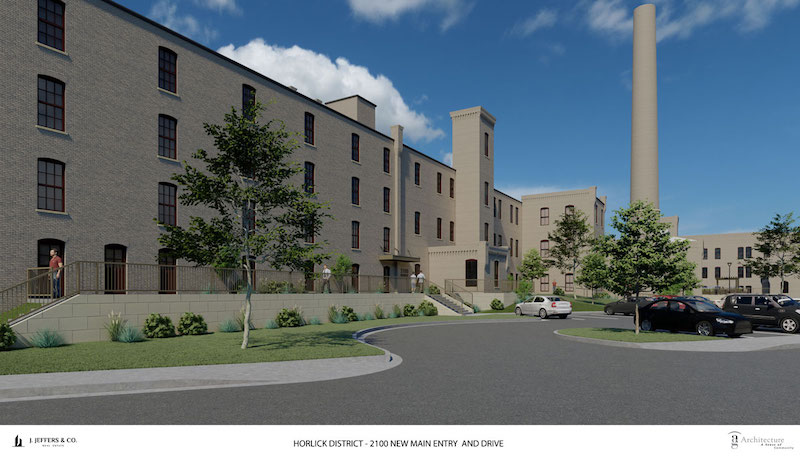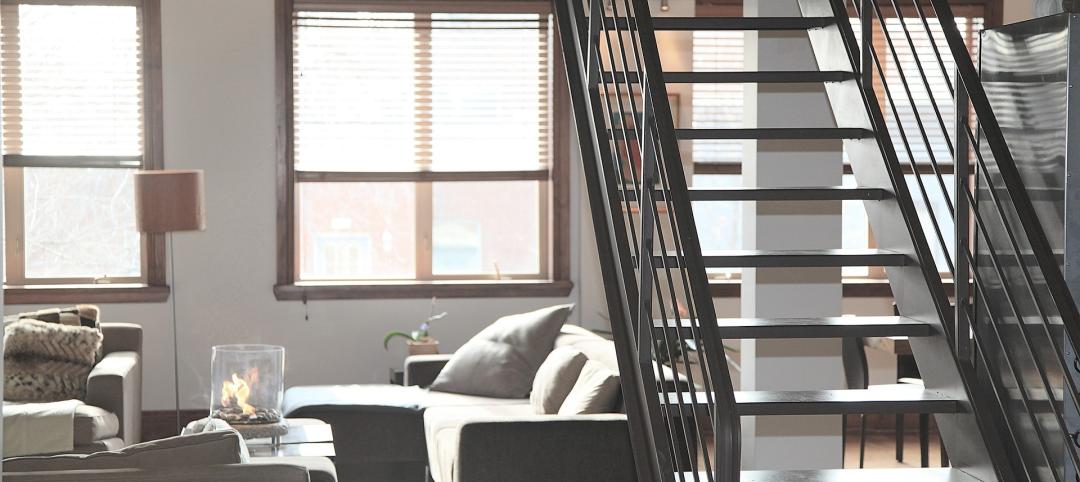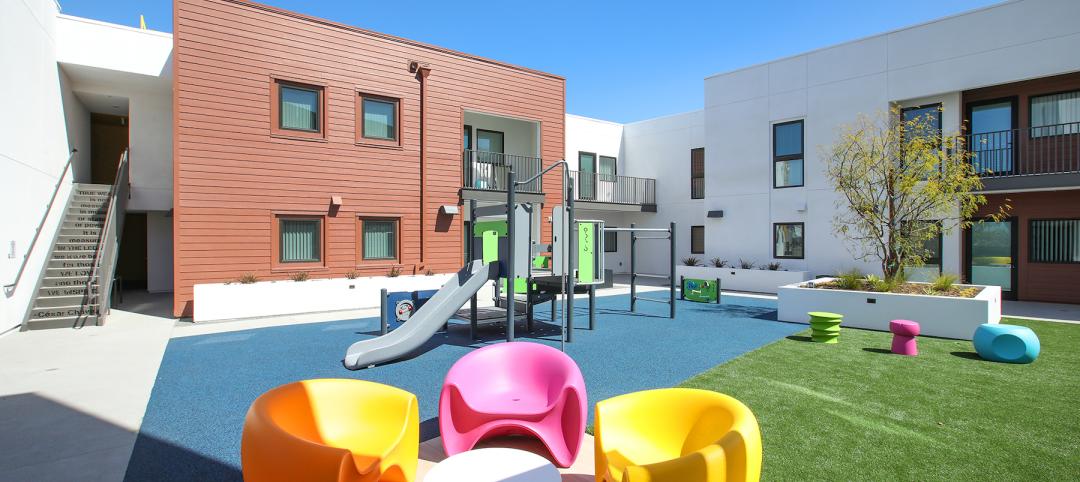Building Teams that include developer J Jeffers & Company and the general contractor CG Schmidt have three adaptive reuse projects underway in Wisconsin that attest to the unique challenges this kind of work presents, especially when historic preservation is a factor.
Scheduled for completion in July is the $40 million Phase 1 reconstruction of the Horlick Malted Milk factory complex in Racine dating back to 1875. This project’s Building Team—which also includes AG Architecture, JSD Engineering, and the historical consultant Heritage Consulting—is converting the northern building for 76 market-rate housing units. That building is being rebranded as Headquarters at Horlick. The southern building, renamed Horlick Flats, will have a mix of 60 market-rate and affordable apartments, managed in partnership with Lutheran Social Services.
Phase 1 will build out the infrastructure of this 13-acre complex, on which J Jeffers owns nine of 14 buildings and has contracts on the rest.
In Milwaukee, J Jeffers and CG Schmidt are working with Eppstein Uhen Architects and structural engineer Spire Engineering to adapt two buildings once home to the Milwaukee Journal Sentinel newspaper. (J Jeffers acquired the downtown block where the Journal Communications buildings sit for an undisclosed price in 2019.)
One conversion is a $27 million reconstruction, scheduled for completion in August, that is reimaging a 115,000-sf building originally completed in 1962 for student housing for Milwaukee Area Technical College (MATC). About one-third of the college’s 30,000 students had incomes last year low enough to qualify for financial aid, and the converted building will set aside 27 studio apartments for students earning less than 60% of the area’s median average. The building will also have two- and four-bedroom units, totaling 217 beds.
The other former Journal building under reconstruction, 256,000 sf and originally completed in 1924, will house 103 apartments. The first floor will contain the main lobby and amenity areas. The building’s original multi-story press room will be converted into an 8,800-sf restaurant and brew pub, and underground parking will be in the lower half of the former press room. The residential mix will consist of studio, one-, two-, and three-bedroom apartments as well as street-accessed walk-ups. This $55.7 million project is scheduled for completion in June 2022.
HISTORY PRESERVED, WHERE POSSIBLE
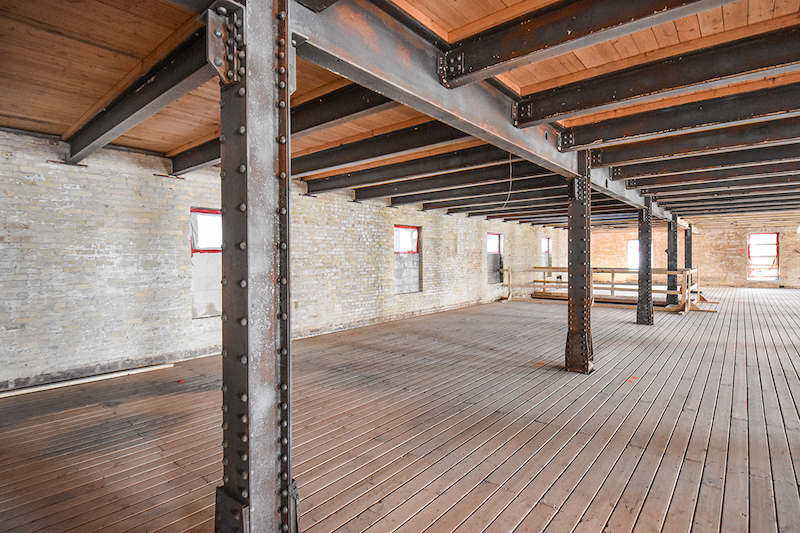
Horlick's tongue-and-groove floors and steel girds are being preserved in this building's reconstruction. Image: J Jeffers & Company
J Jeffers is defraying $100 million of the total cost of these three projects with assistance from federal and state historic tax credits.
Each project has its own set of design and construction criteria. The Horlick factory complex, which is on the National Register of Historical Places, had been abandoned for 45 years, and was so dilapidated the contractors couldn’t even do walkthroughs. While the Building Team razed and removed much of its nonhistorical components, Horlick’s thick exterior masonry walls and structural steel remain. Other architectural elements, such as restored Cream City brick, exposed tongue-and-groove wood flooring, ornate original support columns and steel girders incorporating old school hand-pounded rivets, are being preserved whenever possible.
BRINGING LIGHT TO DARK FLOOR SPACES
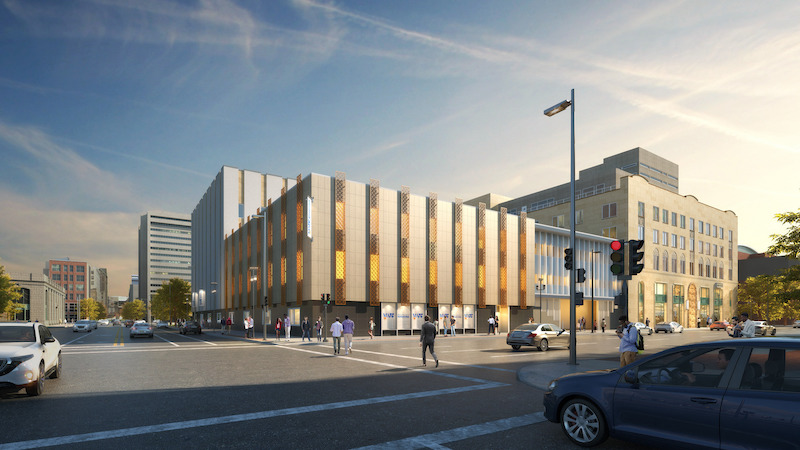
A former Milwaukee Journal-Sentinal building is being converted to student housing for Milwaukee Area Technical College. It will share underground parking with an adjacent Journal-Sentinal buiding that is being converted to residential apartments. Images: Courtesy CG Schmidt
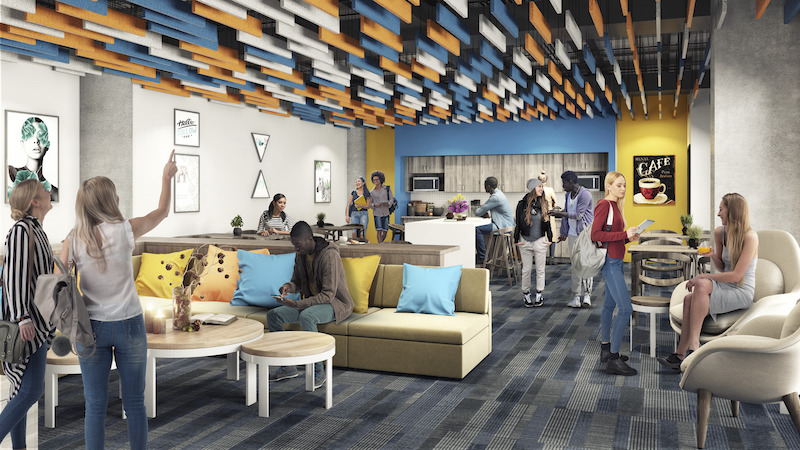 The adaptive reuses in Milwaukee are different stories. Each has floor plates that range from 30,000 to 35,000 sf, which meant that much of the interior space within the buildings had no access to natural light, which is essential to modern residential design. But preservation requirements also protected the buildings’ historic façade.
The adaptive reuses in Milwaukee are different stories. Each has floor plates that range from 30,000 to 35,000 sf, which meant that much of the interior space within the buildings had no access to natural light, which is essential to modern residential design. But preservation requirements also protected the buildings’ historic façade.
To bring light into these spaces, the Building Team created light wells lined with windows in the center of the buildings rather than expanding existing windows or creating new ones.
Each of the Journal buildings includes multi-story, open volume press rooms where newspapers had been printed. Since these rooms are considered part of the buildings’ historic significance, they must be generally preserved while also being repurposed for modern use. Over 160 parking spaces totaling 90,000 sf will be provided in the lower levels of the two adjoining buildings. To achieve this, CG Schmidt and Spire Engineering had to negotiate limited 14-ft clearance within that space to use heavy equipment. Underground concrete parking decks and the new parking garage ramp also required a custom-engineered shoring system to ensure structural integrity.
Additional amenities aimed at enhancing the MATC student-life experience include a computer lab and academic support facilities, as well as one of the hallmarks of the project: converting the cavernous press room area into a regulation-sized basketball court and fitness complex.
Related Stories
Adaptive Reuse | Mar 5, 2023
Pittsburgh offers funds for office-to-residential conversions
The City of Pittsburgh’s redevelopment agency is accepting applications for funding from developers on projects to convert office buildings into affordable housing. The city’s goals are to improve downtown vitality, make better use of underutilized and vacant commercial office space, and alleviate a housing shortage.
Giants 400 | Feb 6, 2023
2022 Reconstruction Sector Giants: Top architecture, engineering, and construction firms in the U.S. building reconstruction and renovation sector
Gensler, Stantec, IPS, Alfa Tech, STO Building Group, and Turner Construction top BD+C's rankings of the nation's largest reconstruction sector architecture, engineering, and construction firms, as reported in the 2022 Giants 400 Report.
Multifamily Housing | Jan 23, 2023
Long Beach, Calif., office tower converted to market rate multifamily housing
A project to convert an underperforming mid-century office tower in Long Beach, Calif., created badly needed market rate housing with a significantly lowered carbon footprint. The adaptive reuse project, composed of 203,177 sf including parking, created 106 apartment units out of a Class B office building that had been vacant for about 10 years.
Adaptive Reuse | Jan 12, 2023
Invest in existing buildings for your university
According to Nick Sillies of GBBN, students are increasingly asking: "How sustainable is your institution?" Reusing existing buildings may help answer that.
Government Buildings | Jan 9, 2023
Blackstone, Starwood among real estate giants urging President Biden to repurpose unused federal office space for housing
The Real Estate Roundtable, a group including major real estate firms such as Brookfield Properties, Blackstone, Empire State Realty Trust, Starwood Capital, as well as multiple major banks and CRE professional organizations, recently sent a letter to President Joe Biden on the implications of remote work within the federal government.
Adaptive Reuse | Dec 21, 2022
University of Pittsburgh reinvents century-old Model-T building as a life sciences research facility
After opening earlier this year, The Assembly recently achieved LEED Gold certification, aligning with the school’s and community’s larger sustainability efforts.
Adaptive Reuse | Dec 9, 2022
What's old is new: Why you should consider adaptive reuse
While new construction allows for incredible levels of customization, there’s no denying that new buildings can have adverse impacts on the climate, budgets, schedules and even the cultural and historic fabrics of communities.
Mixed-Use | Dec 6, 2022
Houston developer plans to convert Kevin Roche-designed ConocoPhillips HQ to mixed-use destination
Houston-based Midway, a real estate investment, development, and management firm, plans to redevelop the former ConocoPhillips corporate headquarters site into a mixed-use destination called Watermark District at Woodcreek.
Multifamily Housing | Nov 29, 2022
Number of office-to-apartment conversion projects has jumped since start of pandemic
As remote work rose and demand for office space declined since the start of the Covid-19 pandemic, developers have found converting some offices to residential use to be an attractive option. Apartment conversions rose 25% in the two years since the start of the pandemic, with 28,000 new units converted from other property types, according to a report from RentCafe.
Multifamily Housing | Aug 17, 2022
California strip mall goes multifamily residential
Tiny Tim Plaza started out as a gas station and a dozen or so stores. Now it’s a thriving mixed-use community, minus the gas station.


